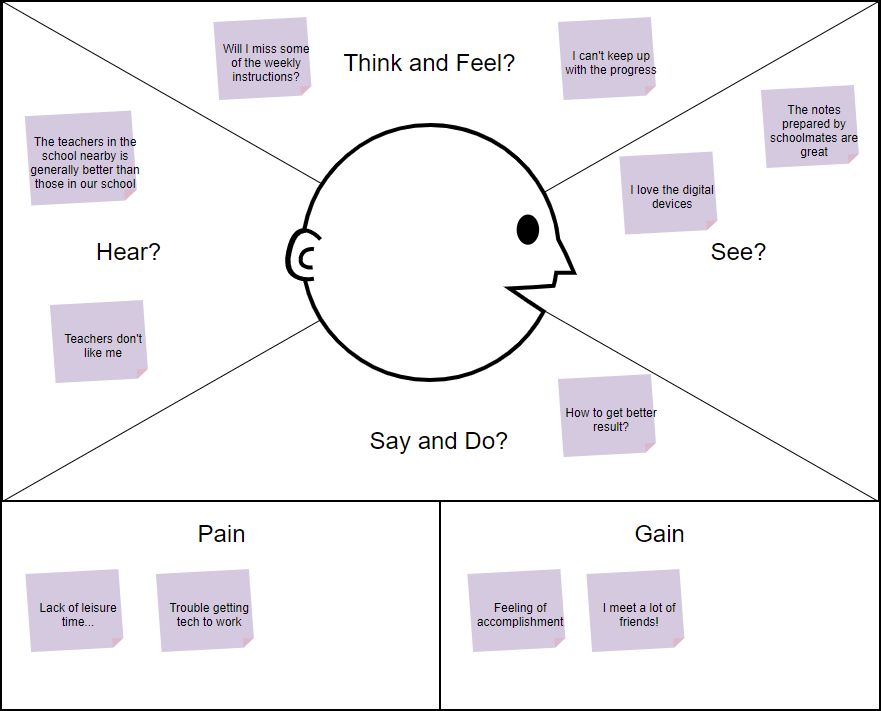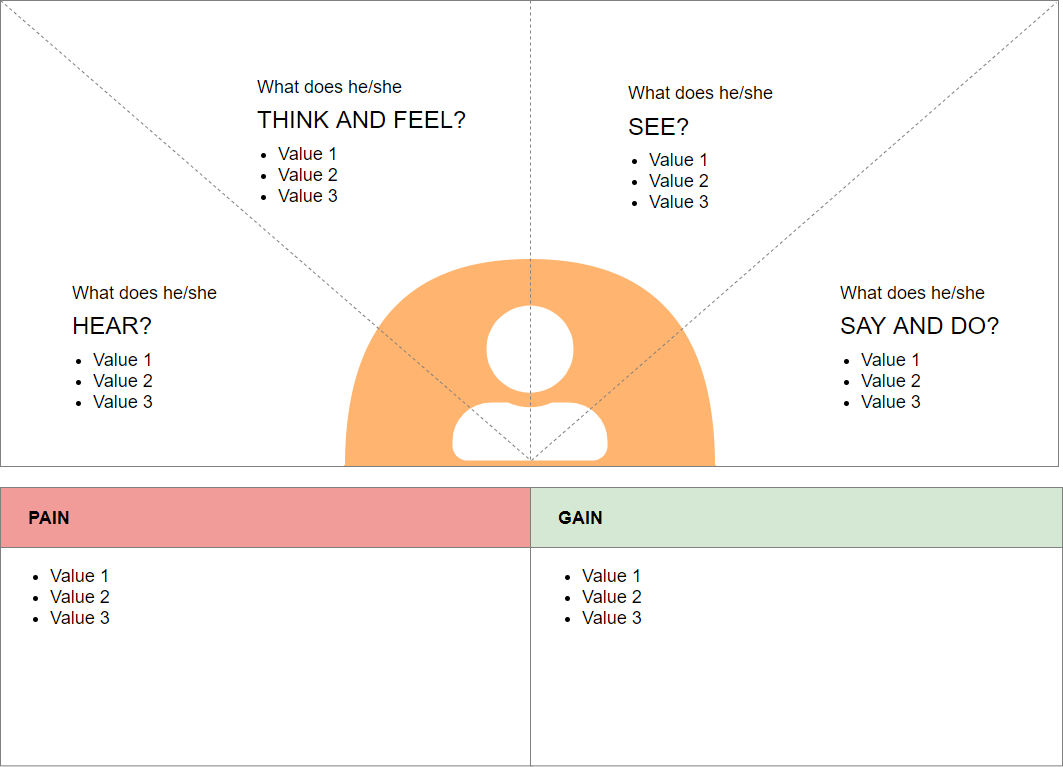An empathy map, originally created by Dave Gray, is a collaborative tool team can use to gain a deeper insight into their customers. It gains popularity in the agile community for understanding the context, psychological and emotional needs of customers.
Much like a user persona, an empathy map can represent a group of users, such as a customer segment that helps us to make better product design-oriented decisions by prioritizing the user’s needs. It is widely used as the foundation of the UX process and hints on what further steps are needed in UX research to create the full-fledged user-persona.
What is a Say – Think – Feel – Do Model?
If you’ve never come across an empathy map before, they provide in-depth context about what a user is saying, thinking, feeling and doing whilst accessing a service, while means that an empathy map (Say – Think – Do – Feel model) is split into 4 quadrants, with the user or persona in the middle as shown in the following figure:
- Says – It generally highlights the problem set and focuses upon what exactly a user is looking for.
- Thinks – “It concludes what the user is thinking all the time while performing different actions in their journey.
- Does – It is used to jot down the observed user behavior while they were performing a set of different actions.
- Feels – It collects the general human emotions like frustration or delight whichsoever is experienced by the interviewee.
- Pain – It describes what their biggest frustrations are, what obstacles stand in their way and which risks might they fear to take?
- Gain – It describes what do they need to achieve and how do they measure success?

Edit this Empathy Map Template
Empathy Map Example – Student’s School Life

More Empathy Map templates

Edit this Empathy Map Template

Edit this Empathy Map Template
